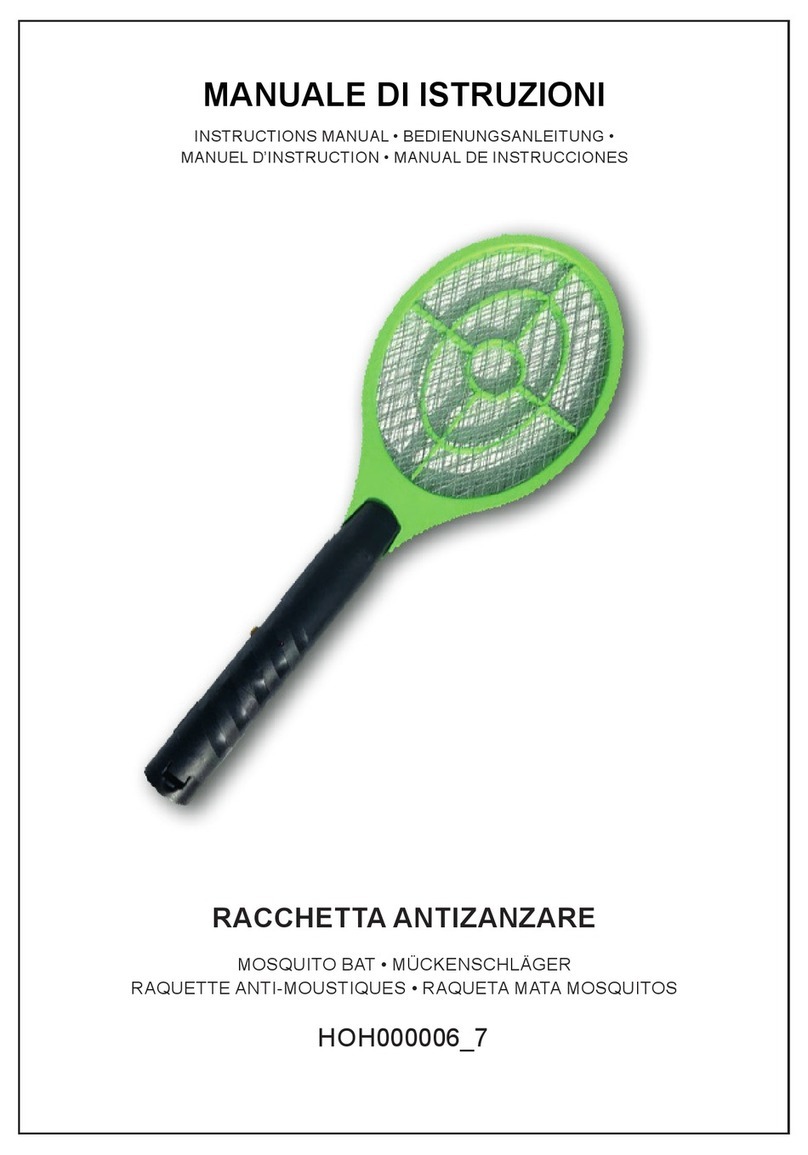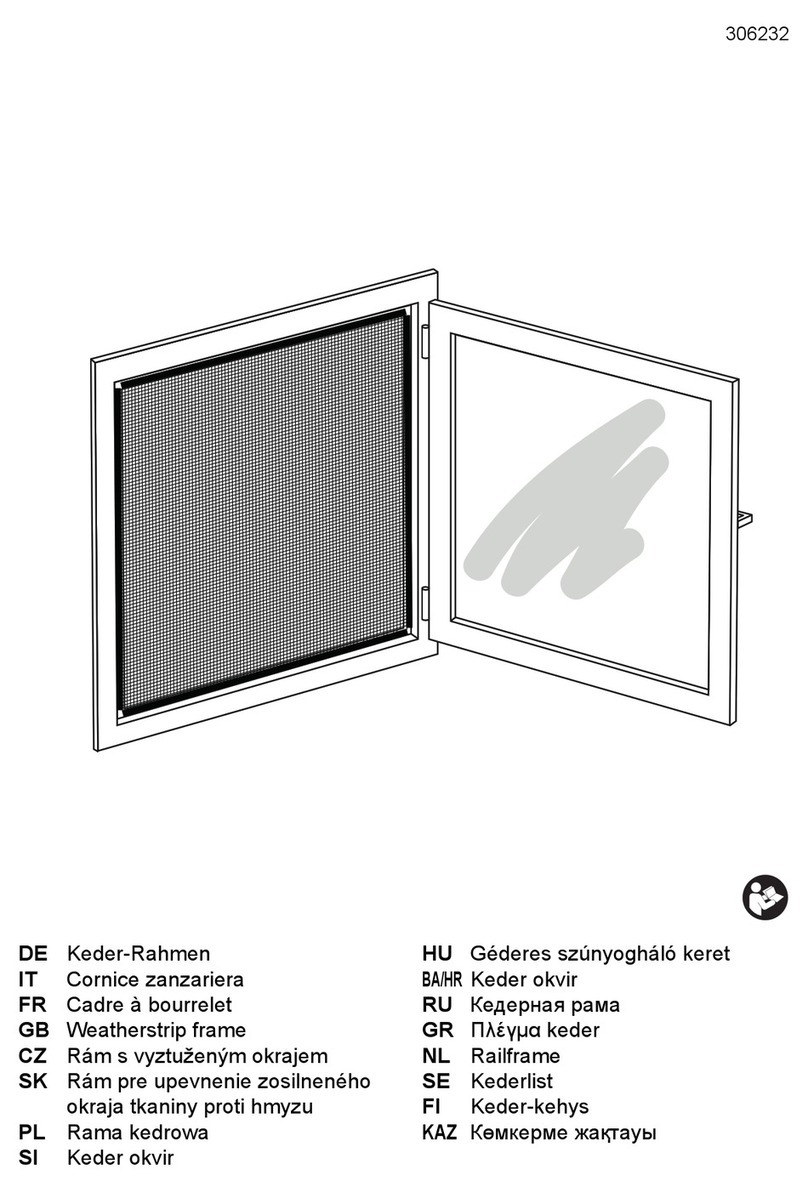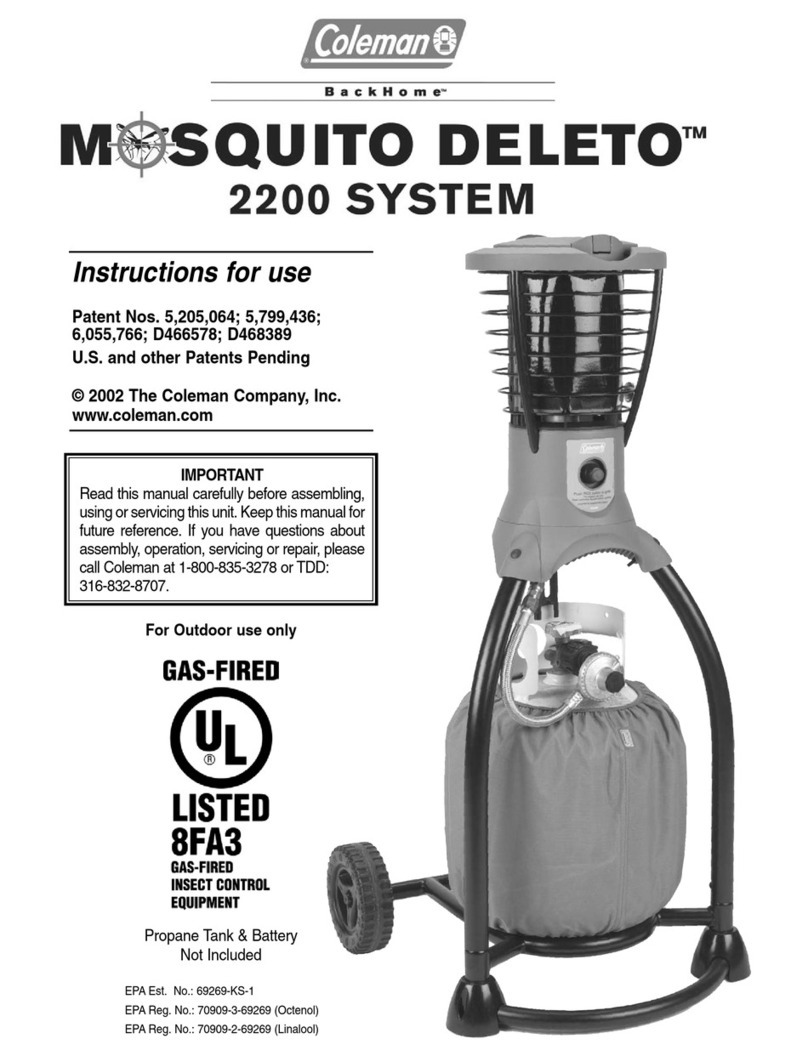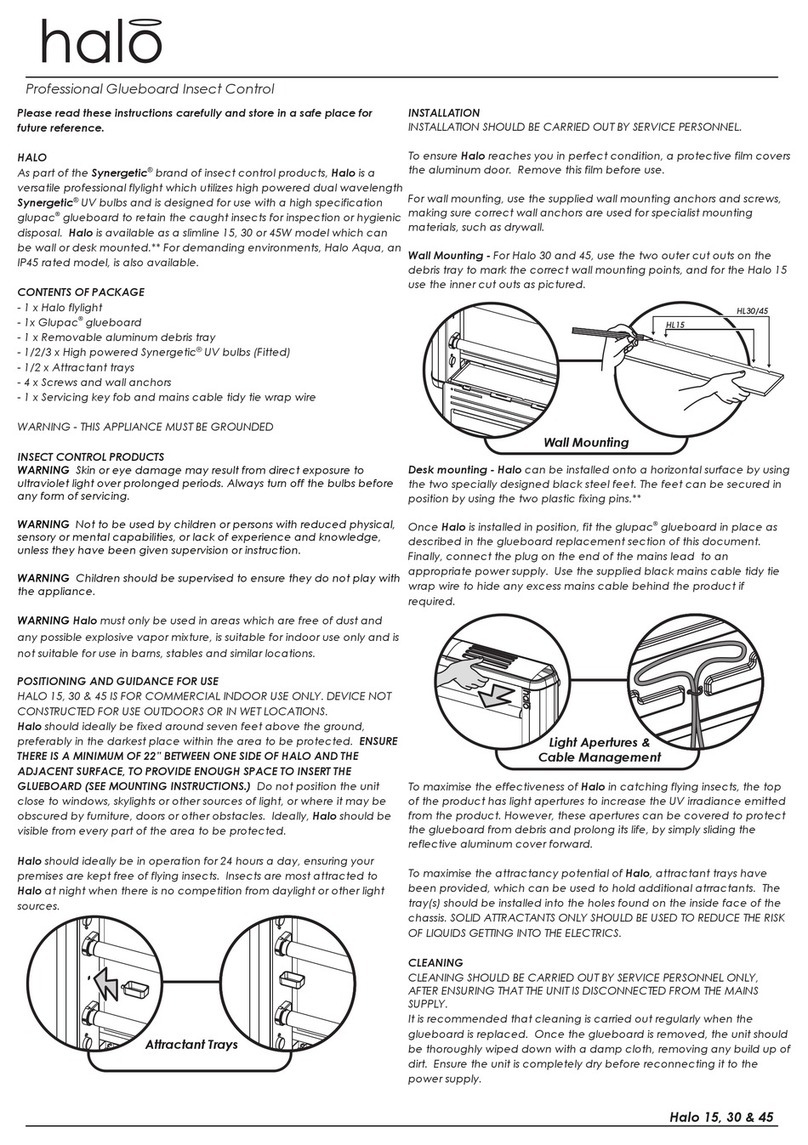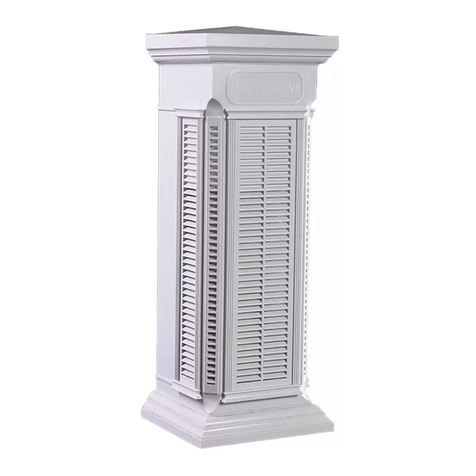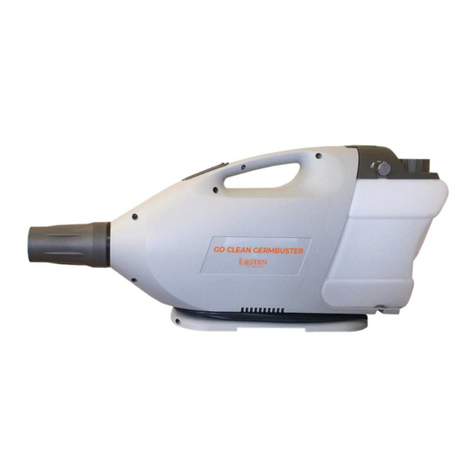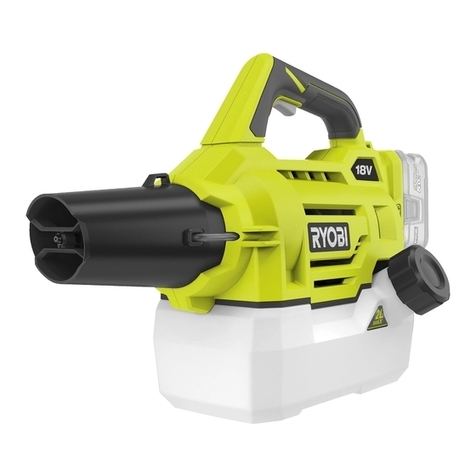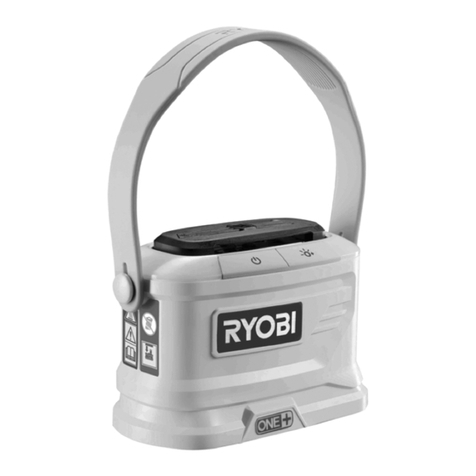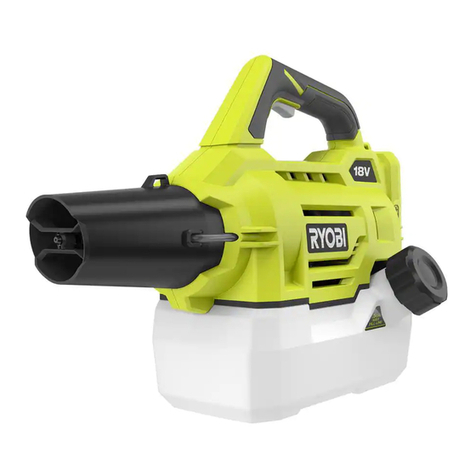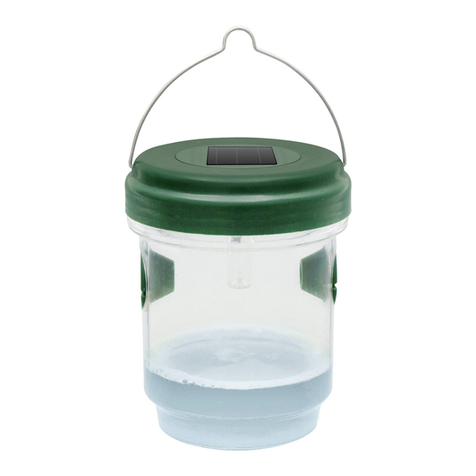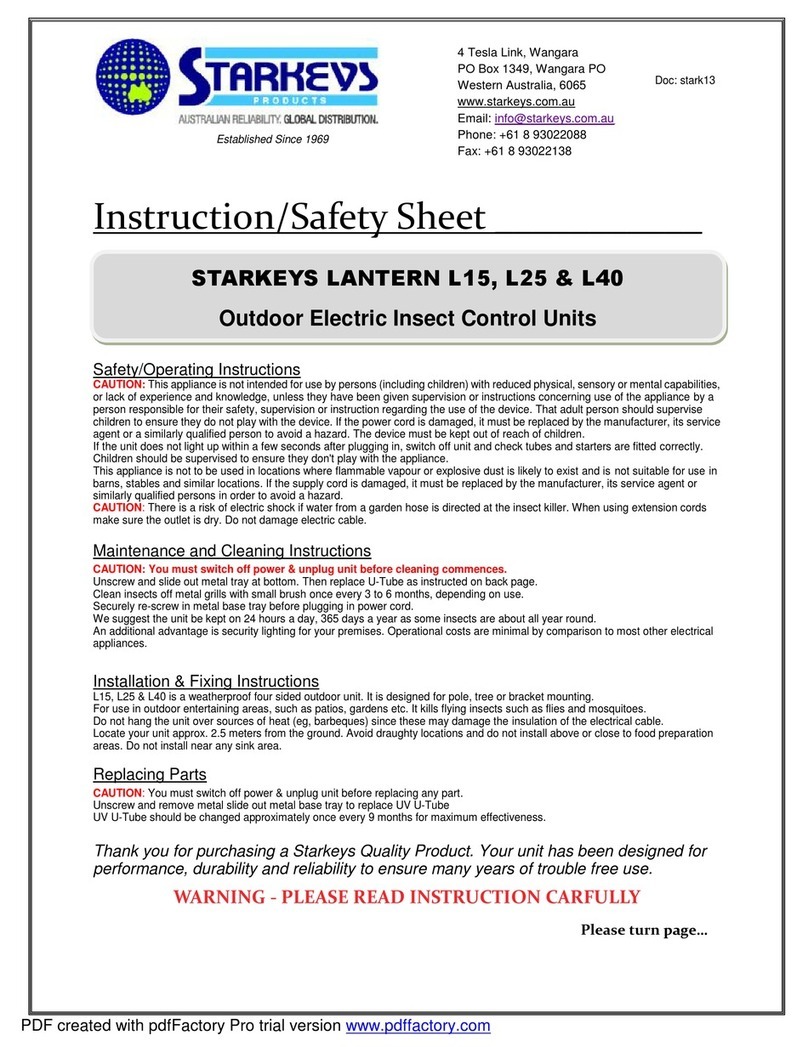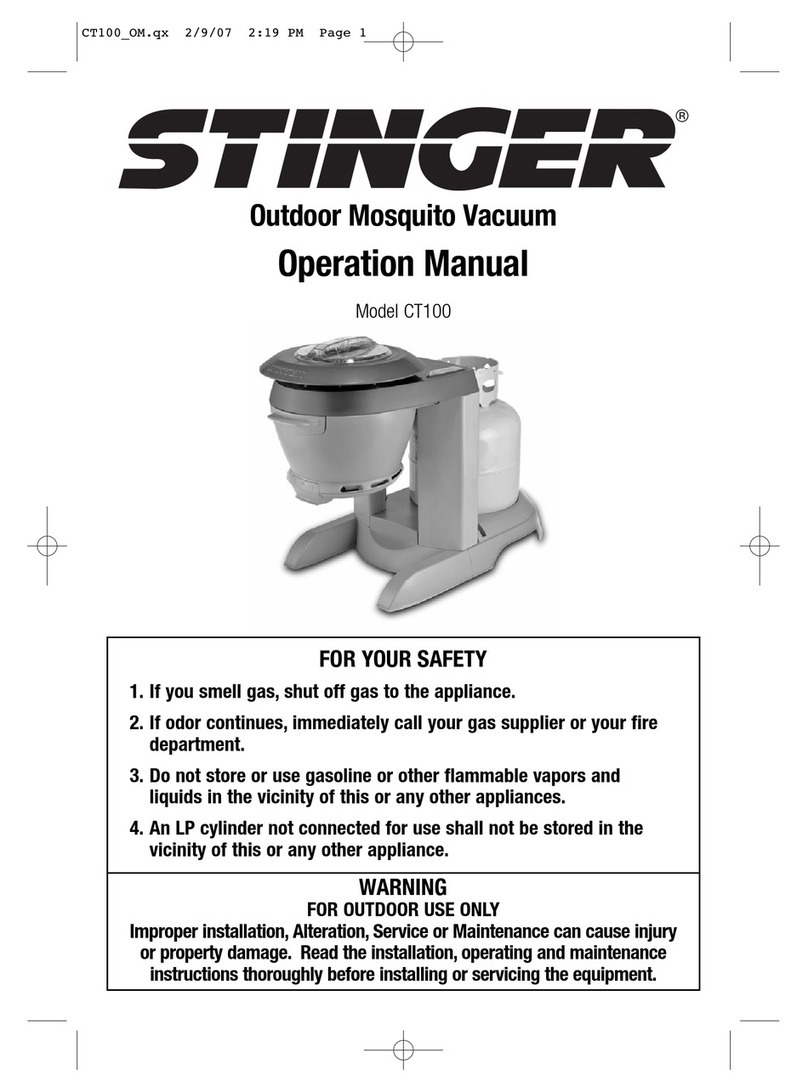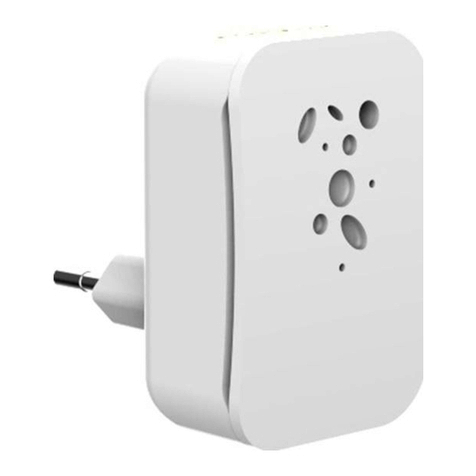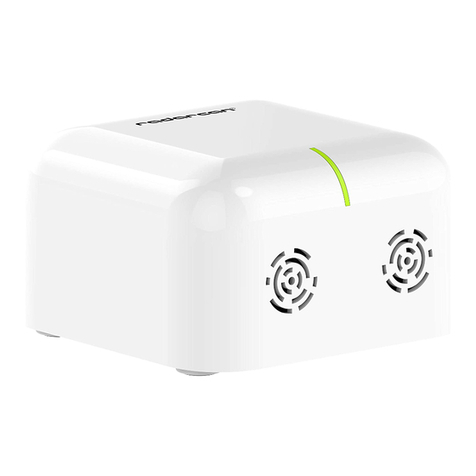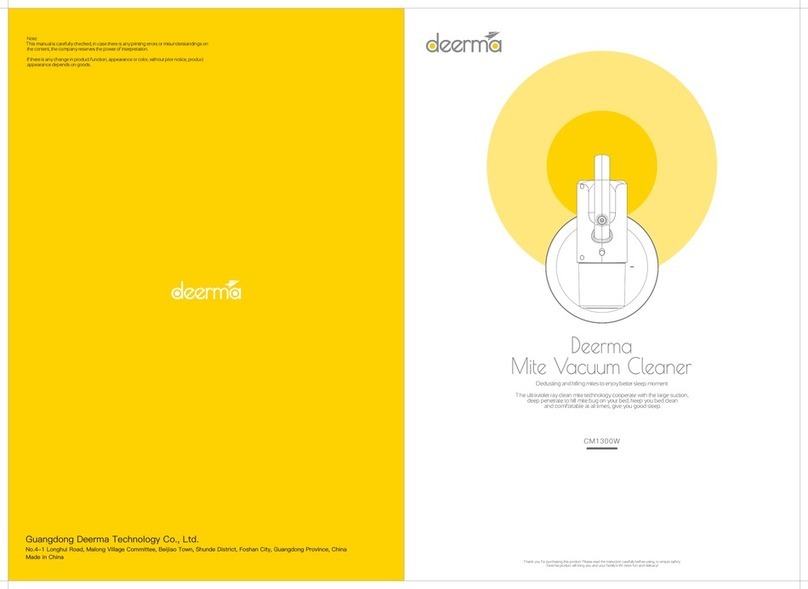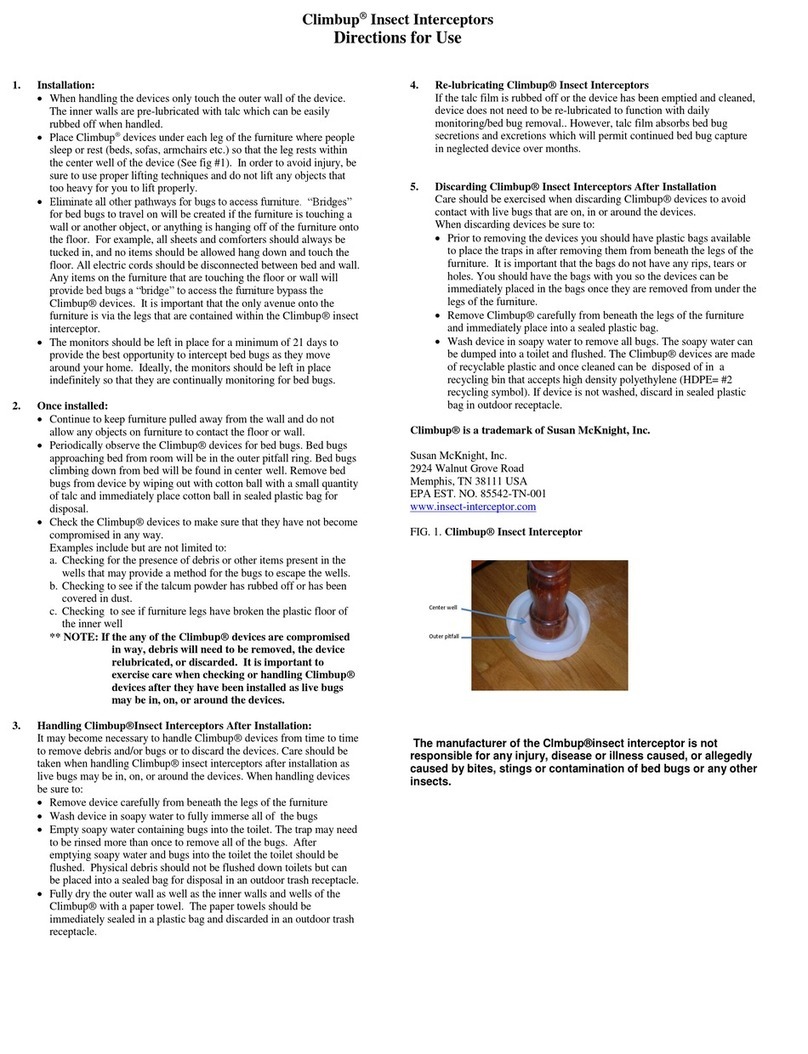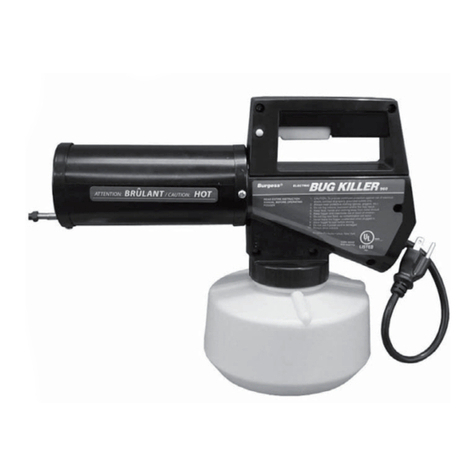
2
■Maintain power tools and accessories. Check for
misalignment or binding of moving parts, breakage
of parts and any other condition that may affect the
power tool’s operation. If damaged, have the power
tool repaired before use. Many accidents are caused
by poorly maintained power tools.
■Keep cutting tools sharp and clean. Properly
maintained cutting tools with sharp cutting edges are
less likely to bind and are easier to control.
■Use the power tool, accessories and tool bits etc.
in accordance with these instructions, taking into
account the working conditions and the work to
be performed. Use of the power tool for operations
different from those intended could result in a
hazardous situation.
■Keep handles and grasping surfaces dry, clean
and free from oil and grease. Slippery handles and
grasping surfaces do not allow for safe handling and
control of the tool in unexpected situations.
BATTERY TOOL USE AND CARE
■Recharge only with the charger specified by the
manufacturer. A charger that is suitable for one type
of battery pack may create a risk of fire when used with
another battery pack.
■Use power tools only with specifically designated
battery packs. Use of any other battery packs may
create a risk of injury and fire.
■When battery pack is not in use, keep it away from
other metal objects, like paper clips, coins, keys,
nails, screws or other small metal objects, that can
make a connection from one terminal to another.
Shorting the battery terminals together may cause
burns or a fire.
■Under abusive conditions, liquid may be ejected
from the battery; avoid contact. If contact
accidentally occurs, flush with water. If liquid
contacts eyes, additionally seek medical help.
Liquid ejected from the battery may cause irritation or
burns.
■Do not use a battery pack or tool that is damaged or
modified. Damaged or modified batteries may exhibit
unpredictable behaviour resulting in fire, explosion or
risk of injury.
■Do not expose a battery pack or tool to fire
or excessive temperature. Exposure to fire or
temperature above 130°C may cause explosion.
■Follow all charging instructions and do not charge
the battery pack or tool outside the temperature
range specified in the instructions. Charging
improperly or at temperatures outside the specified
range may damage the battery and increase the risk
of fire.
SERVICE
■Have your power tool serviced by a qualified repair
person using only identical replacement parts.
This will ensure that the safety of the power tool is
maintained.
■Never service damaged battery packs. Service
of battery packs should only be performed by the
manufacturer or authorised service providers.
FOGGER SAFETY WARNINGS
WARNING! Do not use this product with any flammable
chemicals or any chemical containing alcohol, sodium
hypochlorite, chlorine, vinegar, chlorine dioxide, hydrogen
peroxide, bleach, sulphurs, industrial chemicals, or
seawater. Some of these products are highly irritating to
the skin and eyes and some of these products are highly
flammable, which may lead to fire or explosion if an ignition
source is present. Any use of these chemicals will void the
product warranty.
■Wear personal protective equipment at all times when
using the product. For safety purposes, use the product
correctly and in accordance with the user manual and
relevant chemical SDS sheets to avoid exposure to
hazardous chemicals.
■Always empty and rinse the tank between uses. Do not
store chemicals in the tank. Read and check the user
manual for further information.
■If the product is used for herbicide or insecticide
applications, do not re-purpose it for use with cleaning
agents or disinfectants. Tools used for herbicide or
insecticide applications are considered contaminated
and should not be used with any cleaning products.
Obtain a second unit of the product for dedicated use
with cleaning products and disinfectants only.
■To reduce the risk of fire or explosion, do not use the
product with flammable liquids, such as gasoline or
other chemicals with a flashpoint below 55°C.
■Operate the product only in temperatures between 0°C
and 40°C.
■Store the product in a location where the ambient
temperature is between 0°C and 40°C.
■Be aware of any hazard presented by the chemical
solutions. Always follow the chemical manufacturer’s
instructions on usage, handling, and storage.
■Chemicals should be stored out of reach of children.
■Refer to the chemical manufacturer’s instructions to
check if the chemical is suitable for indoor or outdoor
use.
■Do not use the product with any material where the
hazard is not known.
■Always check for and repair leaks before using the
product.
■To help reduce the risk of injury, wear personal
protective equipment, such as face mask, gloves,
safety footwear, and upper-body protection, when
doing the following:
●operating the product
●handling chemicals
●performing maintenance
■Never allow children, persons with reduced physical,
sensory, or mental capabilities or lack of experience
and knowledge, or people who are unfamiliar with these
instructions to use the product.
■Do not smoke, eat, or drink while using the product.
■Keep the area clear of all bystanders, children, and pets
while operating the product.
■Do not let chemicals come in contact with eyes and
skin. If chemicals come in contact with the skin, wash
